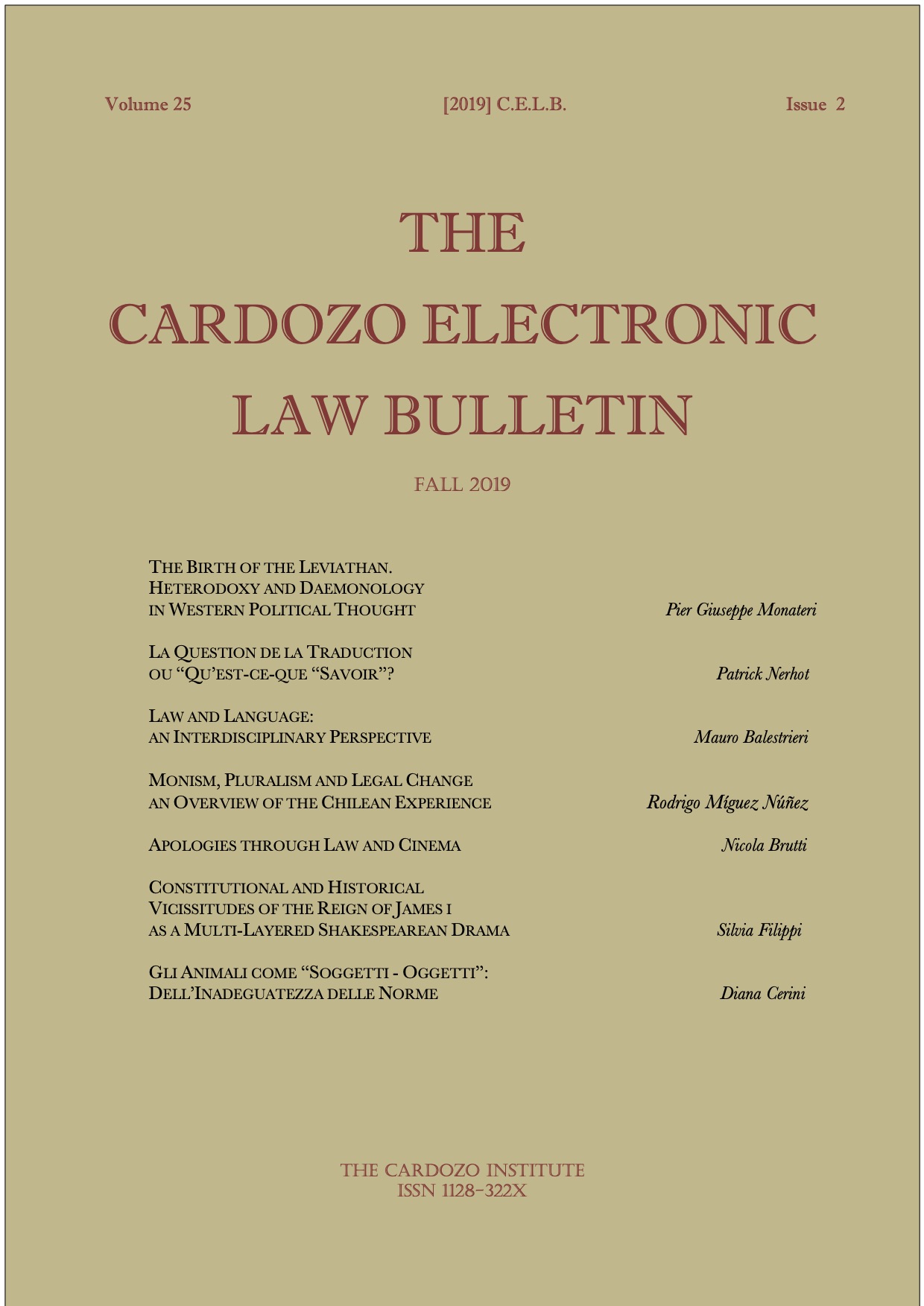Constitutional and Historical Vicissitudes of The Reign of James I as A Multi-Layered Shakespearean Drama
DOI:
https://doi.org/10.13135/1128-322X/6151Parole chiave:
law and literature, James I, Shakespeare, royal prerogatives, union of the crownsAbstract
The essay aims to demonstrate that the historical conditions and the constitutional order that characterized the reign of James I permit to institute a comparison between them and some of the events narrated in the plays Shakespeare wrote during the late Elizabethan and the Jacobean period. The Bard’s historical dramas stage the gradual and tortuous passage from a «descendant» model of sovereignty to an «ascendant» model, but in every play there are multiple keys of interpretation, offering a multi – layered structure, in which multiple strands intersect to create a baroque drama - machinery. The literary research is thus combined with the political and legal definition of sovereignty and legitimacy. The first part of the work deals with the parallelism between James’ accession to the throne and the plot of Hamlet, focusing also on the influence that the king’s “historical presence” exerted on the fictional character of the Prince of Denmark. The second part, taking into account James’ ‘divine right of the kings theory’, analyses how the ancient doctrine of “The King’s Two Bodies”, that it is to find also in Richard II, influenced the constitutional conceptualization of the royal prerogatives. The third part illustrates the (failed) attempts in building a national identity after the personal union of the Crowns of England and Scotland and the ambiguities in interpreting King Lear, tragedy traditionally linked with the union issue. So historical events, law and literature converge in drawing a period in which ancient and new elements are struggling, and the advent of the modern State is going to reshape the medieval order.





